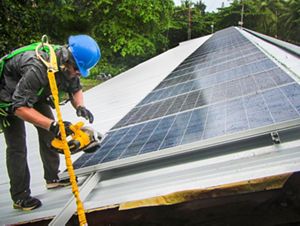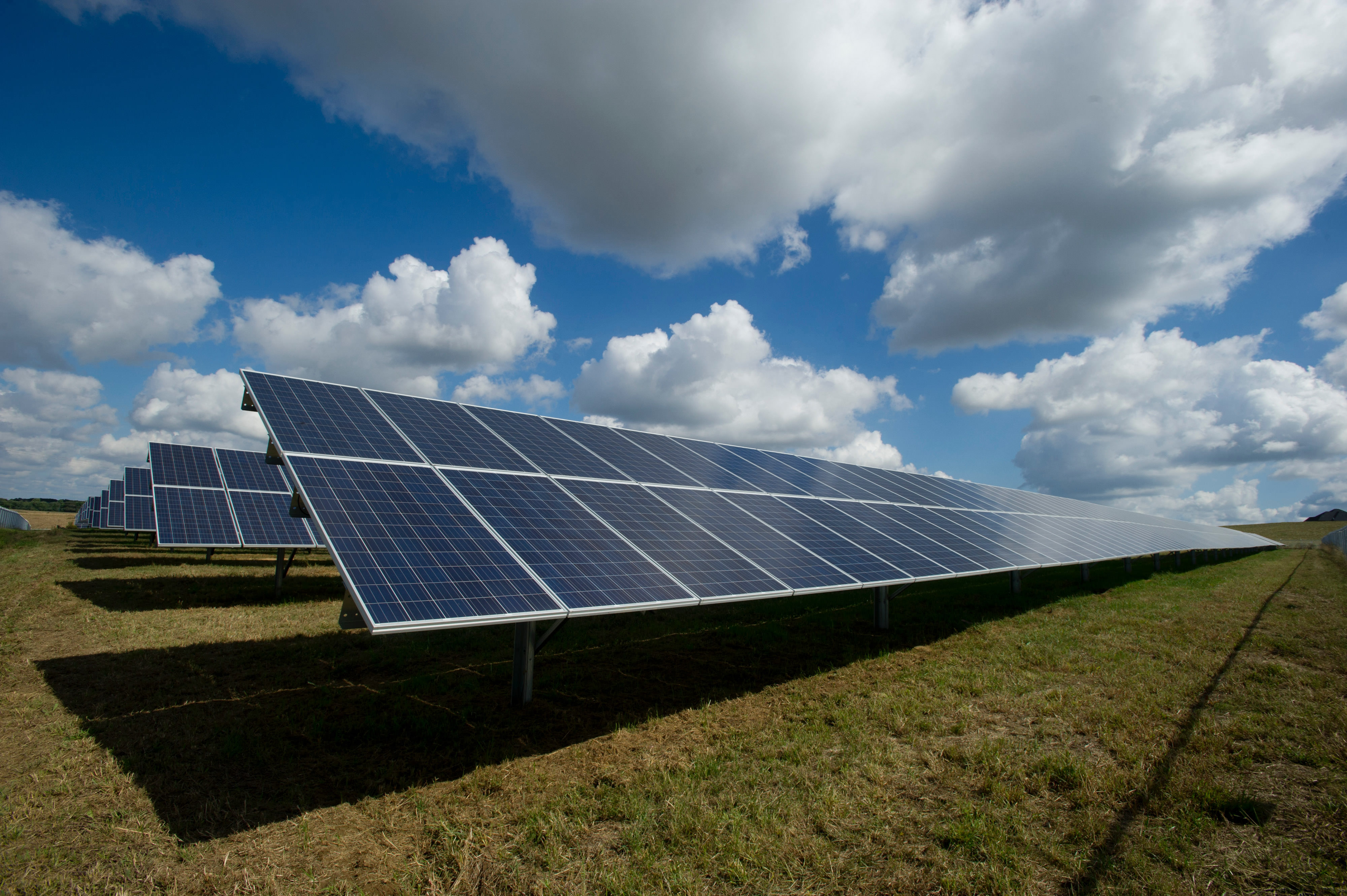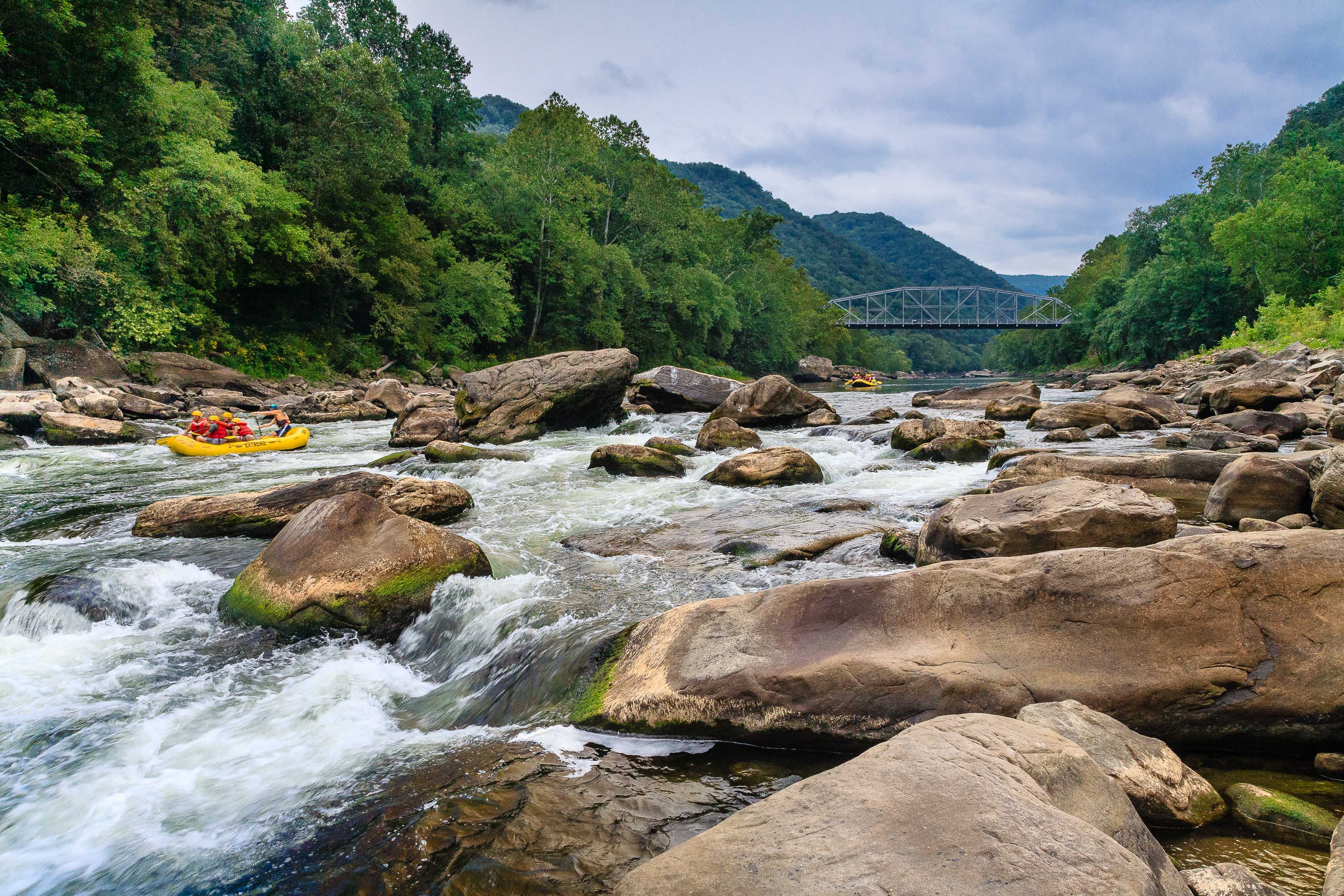Benefits of Solar Energy Development
- Create new jobs and retrain laid off coal miners to apply transferable skills such as heavy equipment operation for site preparation, electrical wiring, etc.
- Attract new manufacturers and employers.
- Replenish much-needed tax base that has dwindled with the decline in coal markets.
- Create new revenue streams for mine-land owners by turning unproductive liabilities into potentially profitable assets.
- Minimize land use conflicts from energy exploitation on greenfields elsewhere.
West Virginia has a time-sensitive opportunity to engage, like surrounding states, for investments and jobs created by solar energy development. We, too, can grow the economy by diversifying our energy mix to attract new industries, employers and manufacturers to the state. We don't want to miss out on this opportunity. As the market demand for solar energy increases and the pace of solar development around West Virginia grows rapidly, there’s a small window of opportunity for state leaders to take proactive action and ensure these projects come to West Virginia and not just surrounding states.
Why West Virginia?
It is estimated that over 400,000 acres of mine lands and brownfields could be suitable in West Virginia and Central Appalachia for siting solar generation. If all these former mine lands were harnessed for solar development, it would be enough land area to double the total solar capacity that has been installed in the U.S. to date. Furthermore, prioritizing solar siting on previously disturbed lands and rooftops of homes and business around the state would help steer energy development away from forests and other lands important for clean water, wildlife, forestry, carbon sequestration and nature-based tourism and recreation.
With massive upheaval in energy markets due to COVID-19-related disruptions amid a longer-term global transition to a low-carbon future, solar energy is an important pathway for West Virginia to continue serving as an energy leader and attract a wider array of new employers. Not only can solar energy development generate new climate-friendly revenue streams for residents, businesses and landowners alike, but conservation compatible renewable energy output is sought after by an increasing cadre of corporate purchasers.
Download the Executive Summary of the Roadmap.
Quote
The U.S. Bureau of Labor Statistics projects that solar photovoltaic installers will continue to be the fastest growing occupation from 2018-2028.
The Opportunity
Jobs are growing within the solar industry and offer an opportunity to retrain laid off coal miners with transferable job skills to participate in the new energy economy. Over 230,000 people are already employed in the solar industry, and solar installation jobs are projected to grow by 52%. With the right enabling policies in place, West Virginia can expand its existing solar energy industry and maximize new jobs and investment opportunities.
The Nature Conservancy is working with stakeholders to create the enabling conditions by raising awareness about the benefits of solar, identifying viable sites for development and advancing policy changes grounded in science to create a fair and predictable energy market. In addition, TNC Conservancy and important stakeholders have developed a Solar on Mine Lands Road Map to identify steps for West Virginia to capture the benefits of solar on these lands as well as an accompanying report about the economics of solar energy more broadly.

The Time is Now
The Nature Conservancy is committed to working with the owners of former mine lands, mining companies, solar energy developers, utilities, renewable energy purchasers and state and local decision-makers to create the conditions necessary for West Virginia to capture the benefits of solar energy. We stand ready to do what’s required to move the Solar on Mine Lands Initiative forward. It is a win-win for the economy and nature, and it serves as a key solution to help tackle climate change.
Download the Executive Summary (pub. date May 2019)
Solar By the Numbers
-
400,000
acres of former mine lands across the region are suitable for large-scale solar developments—enough to double the U.S.'s current solar capacity.
-
230,000
people are currently employed in the solar industry, and the U.S. Bureau of Labor Statistics projects solar installation jobs will grow by 52%.
-
29
states have adopted Renewable Energy Standards to promote clean energy markets and economic growth.
What The Nature Conservancy is Doing
The Nature Conservancy’s work includes:
- engaging stakeholders through outreach
- distributing best practices
- identifying viable sites
- supporting pilot projects
- advancing policy changes to support the development of a robust marketplace for solar on conservation compatible lands such as mine lands, brownfields, parking lots and rooftops
The Nature Conservancy is committed to working with the owners of former mine lands, mining companies, solar energy developers, utilities, renewable energy purchasers and state and local decision-makers to create the conditions necessary for West Virginia to capture the benefits of solar energy. We stand ready to do what’s required to move the Solar on Mine Lands Initiative forward. We would like to work with as many stakeholders as we can to create a platform for long-term, solution-oriented engagement where the necessary details can be worked out over time.
Mining the Sun in Other States
The EPA RePowering Program identified 43 million acres of former mine lands and brownfields—an area the size of Washington state—across the country that are feasible for renewable energy development. These lands hold some of the biggest opportunities for low-impact renewable energy siting. The Nature Conservancy is working in two big mining states to help site solar power on former mine lands: West Virginia and Nevada.
Interested in Learning More? Please contact:
Eriks Brolis
Director of Nature & Economy Programs
eriks.brolis@tnc.org




